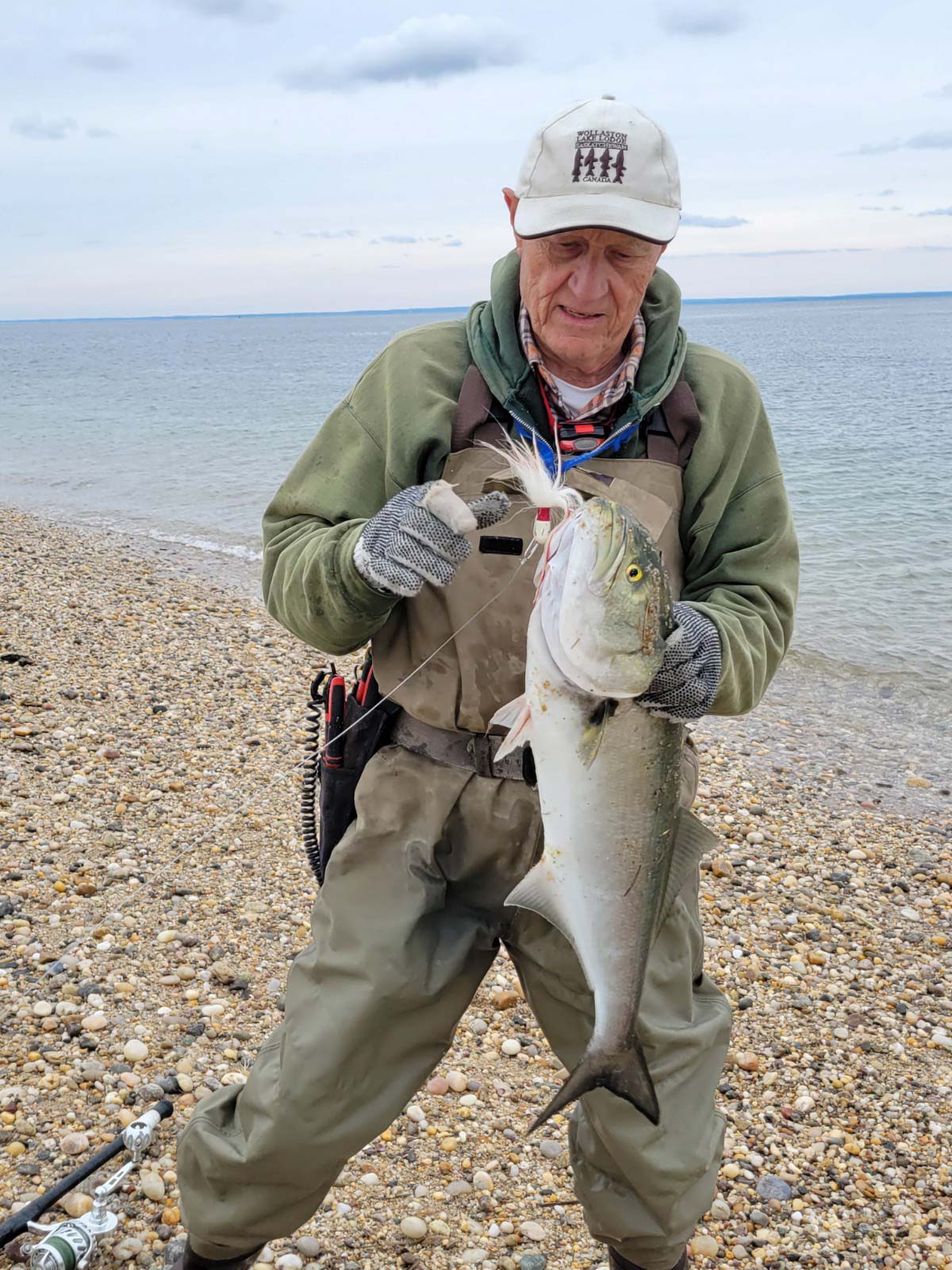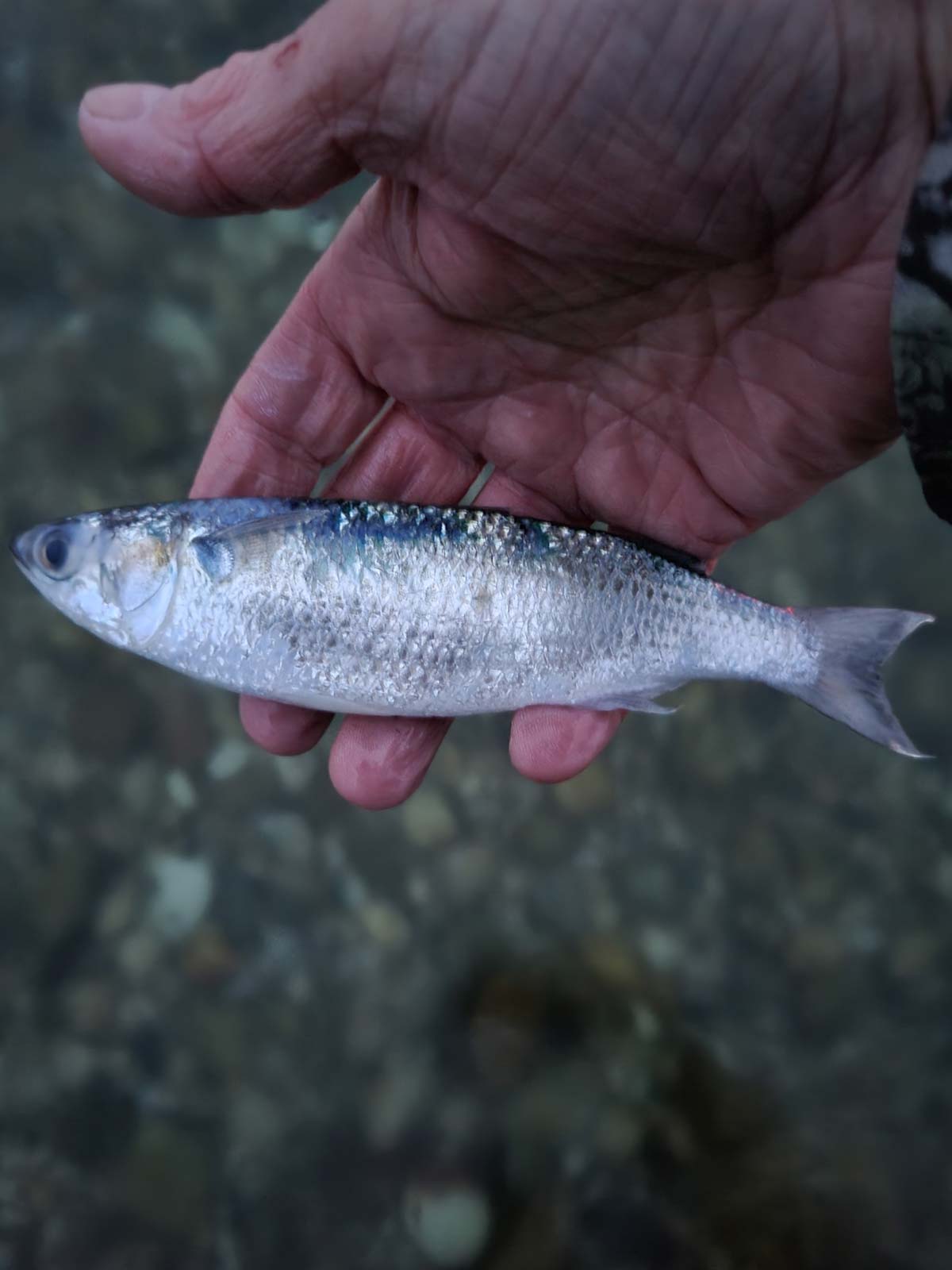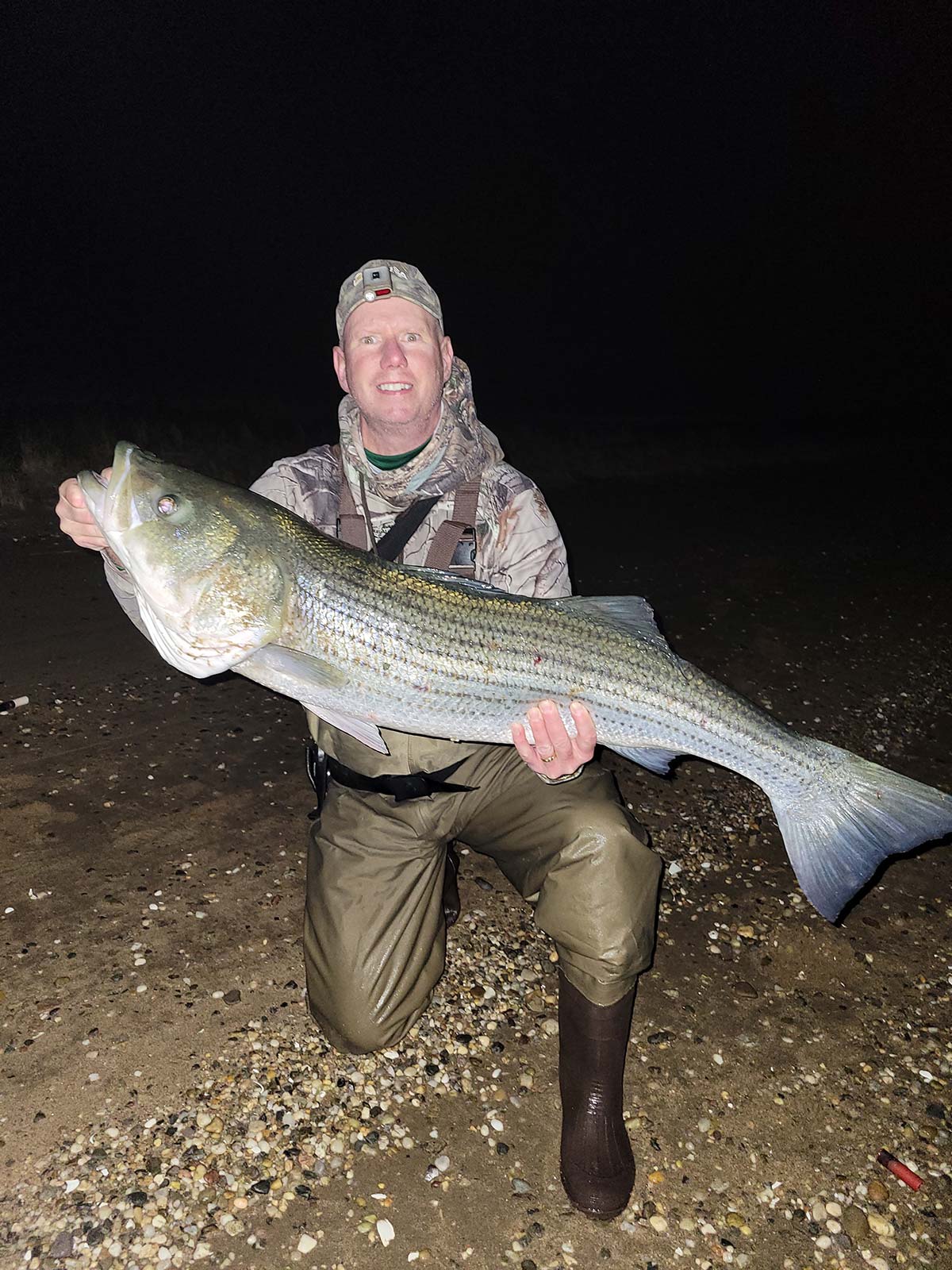
Thinking back on those precious few days, I realized that a major player in the creation of the run was the gale force northwest winds.
Just as the 2022 fall surf season began to gather some steam, the weather took a severe turn toward the intense and, similar to recent autumns, I swore at the weather gods and asked, “Is it too much to ask to have one fall run with normal weather?” I’m not shy to admit that I’ve been frustrated by recent fall conditions: flat structure-less beaches, early bait migration, weed, and gale force winds in my face. I’m a pattern fisherman and patterns don’t exist when the weather changes every other day, and when cold fronts and coastal storms barrel through the area regularly and disrupt normal migration.
Cold Front
And so it came to pass that a serious cold front pushed across Long Island on a Wednesday in late-September, and Thursday’s weather was abominable. Gale force northwest winds behind the front sand blasted anyone trying to fish South Shore beaches, and on the North Shore the water had turned from blue-green to foamy white in the furious wind. I took a ride to a local Sound beach in spite of it all, could barely push the vehicle door open against the wind, took one look at the Sound, and simply exhaled in frustration.
Low Expectations
At this point I returned home thinking that it wouldn’t be worth fishing for several days and started to think about other things to do to distract me from resenting the weather. What I didn’t know while I was cursing the weather, was that the strong northwest winds were in process of doing North Shore surf anglers a solid. Although it wasn’t a terribly cold NW wind, the wind itself seemed to jumpstart a bait migration in Long Island Sound, and the harbors began to grudgingly give up its season’s store of young-of- the-year baitfish. Overnight, schools of bait started to trickle out of the harbors and then east along the beaches. Ironically, although a boon to surf rats, this mass exodus of bait would preclude the usual late fall mid-harbor blitzes that so many boat anglers look forward to. Nonetheless, it would be the first time in years that Long Island Sound beaches would experience this kind of action for both stripers and blues in the fall.

Keeping The Faith
Given the South Shore was a mess after the gale and, having nothing to do, I decided to fish on Friday. Yes, the gale was over, but my expectations were low given that I had recently only been catching a few schoolies. I thought, well, at least I’ll get some exercise and fresh air, and who knows? I think it’s important to remain hopeful as a surf angler.
Friday turned cloudy and I returned to the beach looking for, well, anything. I started in the back of a harbor. Not only didn’t I catch anything, but the peanut bunker and spearing I had been seeing were nowhere to be found. I think you can now appreciate the level of my autumnal frustration. I thought about going home, but I’d only been at it for about an hour, so I decided to hit an outside beach. I guess in the back of my mind I wondered, if the bait wasn’t in the harbors, maybe it was outside.
The weather was calm and so was Long Island Sound, but, as I stepped into the water at a Sound beach, it looked lifeless. Oh well, make a few casts and then go home. Maybe tomorrow will be better. I thought for a moment that I was beginning to sound like a Brooklyn Dodger fan from the 50s when the resounding cry was, “wait till next year.” I slapped myself symbolically and reminded myself that defeatism was not the right approach for an experienced surf nut like me. I made a half-hearted cast with a 1-ounce bucktail and pork rind and began to retrieve. About halfway in, my lure was bumped, I snapped my rod up out of instinct, and found myself attached to a fish. I was suddenly surprised, grateful, and happy at the same time. The fish didn’t fight much at first and I assumed it was a small striper. Still, I was glad to have the fish given the weather blow-outs of recent weeks and resulting “stink-o” fishing.
A Sudden Change
The shift in mood was quite sudden when the schoolie turned into something much bigger. I’ve caught enough large stripers and bluefish to tell the difference, and when this fish took off on a very fast run and then another, I knew it was a blue. Large stripers produce power runs, while blues make speed runs. That is, a large bass will run with some speed, but it’s the sense of the “weight” produced by the wide broom tail that makes an impression. On the other hand, the forked tail of a blue has evolved to generate speed and, although big blues bend a rod too, it’s the speed and persistence we notice most of all. Sure, I’ve been fooled by fish of both species, but most of the time an experienced angler can tell the difference between striper and blue.
| GALE FORCE TACKLE |
| Rod: 9-foot graphite custom one-piece rod
Reel: Van Staal 200 reel Line: 20-pound test Sufix Performance Braid Leader: 30-pound Perlon leader Terminal Tackle: 50-pound Spro snap and 50-pound test Spro micro-swivel on the other end |
That blue wasn’t a monster, but monsters were coming. At 12 pounds and very angry, it gave me a good fight. That first day produced a mix of school bass, a few low-teen stripers, and several large blues. What I didn’t know that day was that the intensity of the run would build over the next few days, and last over two weeks.
Saturday witnessed a mild nor’easter. That is, cloudy, some rain, with light east winds. That mild storm seemed to turn a steady pick of fish into fast fishing for even bigger blues and stripers. Still, the water was quiet, the bites were, for the most part, unimpressive. If you didn’t throw a lure out there, you might think it was an empty sea. And unless you knew the fish were there, the sea looked empty and gray. Curiously, some fish slammed the lure while others just seemed to inhale it. I’ve witnessed similar timid attacking behavior before, but I’ve been unable to explain it.
Where’s The Bait?
I walked around in the water; sometimes beyond my waist, looking for bait, but I saw none. Now, simple logic tells us there was bait there, or the fish wouldn’t be there, but what was it? Was it the peanut bunker I saw all summer and early fall in the harbors? Logic also suggested it wasn’t spearing because silversides simply lack the size and calories to attract and hold big fish.
However, as the run of fish continued, I began to see pods of peanuts swimming past me and even shooting behind me. Although some pods were the 3-inch peanuts I saw in the harbors, there were also schools of 5-inch peanuts present and it was these larger baits, I presume, that attracted the bigger blues and stripers. However, it wasn’t until a day or so before the end of the run when surface activity increased, and fish began pushing schools of bait hard. Periodically, dozens of baitfish launched themselves out of the water in advance of the charging gamefish. I saw the 3 and 5-inch peanuts I already knew were there, but what were those 5-inch fish leaping repeatedly out of the water in front of attacking fish? Peanuts may make a leap or two in an attempt to get away from hungry jaws, but they don’t repeatedly “gray-hound” across the water. At first, I had no answer, but when stripers pushed them up onto the sand, my ignorance faded. Flopping on the sand were mullet, a bait I hadn’t seen in western Long Island Sound for a long, long time.
Gale Force
Thinking back on those precious few days, I realized that a major player in the creation of the run was the gale force northwest winds that, at the time, I cursed with gusto. However, it usually takes more than a single factor to create runs of fish and this one was no exception. What would have happened, I wondered, if instead of a mild nor’easter after the gale, the days turned bright, calm, and sunny? Okay, a northwest gale, a mild nor’easter, but then what?
The final piece to this puzzle was the first truly cold days of the fall that followed the easy nor’easter and lowered water temperatures in the shallows of the harbors and, along with storms, winds, and clouds, continued to usher schools of bait out of the harbors and into the Sound. It was a confluence of special circumstances that put fish and bait together along the beaches. There were no offshore clouds of birds and no clusters of boats enjoying great diamond jigging action, because the ingredients kept the fish feeding close to the beach front.
This was no place for light gear. Sure, an angler can catch big fish on light tackle, but with considerable cost to the fish. Big fish simply fight too hard and too long on light gear, accumulate lactic acid, are harder to revive, and scientists tell us that many die within three days, even though they swim away. A true sportsman realizes that somewhat stronger tackle is better suited to managing large stripers and never-quit blues.

Make It Easy
Although I’m usually fussy and specific about lure choices during typical runs of fish, that wasn’t the case this time. The fish, both blues and stripers, didn’t appear to be selective in spite of some tentative hits. Almost any lure was effective, from swimming plugs, to poppers, to tins, to soft plastics on leadheads. However, I prefer single hook lures. So, I used bucktails with pork rind most of the time. Single hooks are safer for both angler and fish, and offer a special angler advantage over multiple treble hooks. Namely, single hooks are removed more quickly and that allows an angler to get back into the water and catch another fish. When it comes to catching fish, I can be a little greedy.
The Moral Of The Story
I am not promising you a rose garden with this article. That is, because this happened to me and others last fall doesn’t mean it will happen again in 2023, simply because the odds are against the confluence of circumstances that created this run of fish. However, we can take away a number of angler relevant ideas from the experience. First, never quit. If you’re a real surf nut, you keep at it. Second, never take lifeless water for granted. Fish don’t always blitz, even in autumn. Third, try to build an inventory of seasons, weather events, moon phases, and bait abundance that tends to create runs of fish. Fourth, maintain your gear regularly in order to be ready for the big fish you hope you’ll catch every time to fish.
In spite of the odds, I’ll be looking for a similar run of fish in autumn 2023; especially if there is a gale force northwest wind in the mix. “One never knows, do one.”




